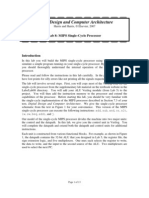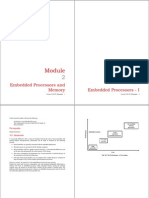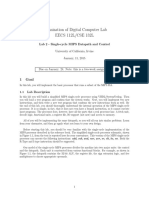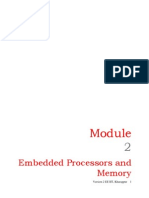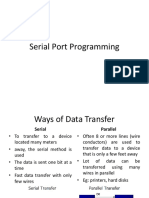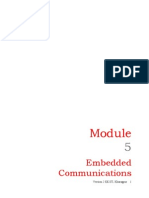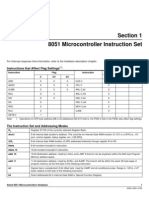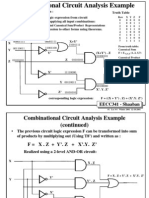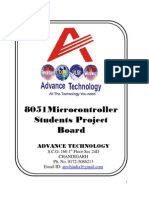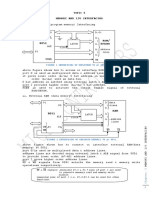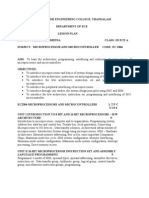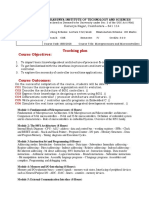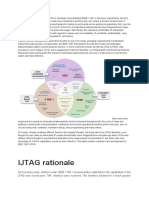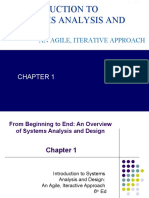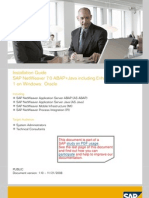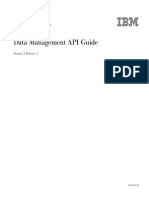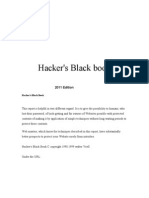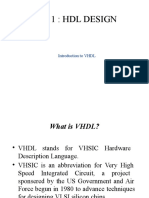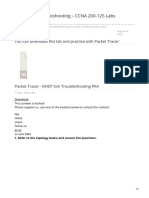Lovely Professional University, Punjab
Course Code
Course Title
Course Planner
Lectures
ECE313
MICROPROCESSOR AND MICROCONTROLLERS
16888::Ambika Aery
Course Category
Courses with conceptual focus
Tutorials Practicals Credits
3.0
1.0
0.0
TextBooks
Sr No
Title
Author
Edition
Year
Publisher Name
T-1
MICROPROCESSORS AND
MICROCONTROLLERS
SOUMITRA KUMAR
MANDAL
1st
2011
MCGRAW-HILL HIGHER EDUCATION
Reference Books
Sr No
Title
Author
Edition
Year
Publisher Name
R-1
MICROPROCESSOR
ARCHITECTURE,
PROGRAMMING AND
APPLICATIONS WITH 8085
RAMESH GAONKER
5th
2011
PENRAM INTERNATIONAL PUBLISHING PRIVATE
LIMITED
R-2
MICROPROCESSORS AND
MICROCONTROLLERS
N. SENTHIL KUMAR, M. 1st
SARAVANAN, S.
JEEVANANTHAN
2011
OXFORD HIGHER EDUCATION
R-3
THE 8051 MICROCONTROLLER
ARCHITECTURE,
PROGRAMMING AND
APPLICATIONS
KENNATH J. AYALA
3rd
1996
PENRAM INTERNATIONAL PUBLISHING PRIVATE
LIMITED
R-4
THE 8051 MICROCONTROLLERS
AND EMBEDDED SYSTEMS
MUHAMMAD ALI
MAZIDI AND JANICE
GILLISPIE MAZIDI
2nd
2007
PEARSON EDUCATION
Other Reading
Sr No
Journals articles as Compulsary reading (specific articles, complete reference)
OR-1
http://www.dnatechindia.com/Tutorial/8051-Tutorial/Interfacing-Switch-to-Microcontroller-Switch-Debouncing.html ,
Relevant Websites
Sr No
(Web address) (only if relevant to the course)
Salient Features
RW-1
http://www.hobbyprojects.com/microprocessor_tutorials/8085_cpu_pin_diagram.html
Pin diagram
RW-2
http://www.hobbyprojects.com/microprocessor_tutorials.html
Opcode instruction set
RW-3
http://www.best-microcontroller-projects.com/led-dot-matrix-display.html
LED interfacing
RW-4
http://www.eastaughs.fsnet.co.uk/cpu/further-pipelining.htm
Animation on pipelining
RW-5
http://www.dauniv.ac.in/downloads/MController_PPTs/MicroC2_eCh13L01PICMicroc PIC family
ontrollerExamples.pdf
4.0
�RW-6
http://www.arm.com/files/pdf/ARM_Arch_A8.pdf
ARM
RW-7
http://mathcs.slu.edu/~fritts/CSCI305_306_F08/AVR/AVR%20Introduction.pdf
AVR
Software/Equipments/Databases
Sr No
(S/E/D) (only if relevant to the course)
Salient Features
SW-1
8085 Simulator
Simulation of programs
SW-2
Keil Software
Compiler for 8051
SW-3
Proteus
Circuit simulator
LTP week distribution: (LTP Weeks)
Weeks before MTE
Weeks After MTE
Spill Over
Detailed Plan For Lectures
Week
Lecture
Number Number
Broad Topic(Sub Topic)
Week 1
Introduction of basic
processors(Evolution of
processors)
Lecture 1
Lecture 2
Chapters/Sections of Other Readings,
Text/reference
Relevant Websites,
books
Audio Visual Aids,
software and Virtual
Labs
Lecture Description
Learning Outcomes Pedagogical Tool Live Examples
Demonstration/
Case Study /
Images /
animation / ppt
etc. Planned
T-1:1.1-1.6
R-2:1.5
L1 : Introduction to the
course
L2: Definitions of
microprocessors
As a result of this
students will learn
different kinds of
microprocessors
Introduction of basic
processors(General
definitions of
microcomputers and
microprocessors)
T-1:1.1-1.6
L1 : Introduction to the
course
L2: Definitions of
microprocessors
L1: As a result of this Animation on
students will get to
evolution of
know the importance microprocessor
of this course
L2: As a result of this
students will learn
different kinds of
microprocessors
General purpose
computer
systems
(Desktop, laptop
and servers) ,
embedded
systems
Introduction of basic
processors(Overview of
microcomputer systems and
their building blocks)
T-1:1.1-1.6
L1 : Introduction to the
course
L2: Definitions of
microprocessors
As a result of this
students will learn
different kinds of
microprocessors
Animation on
evolution of
microprocessor
Trainer kits and
tablet
Introduction of basic
processors(Overview of
microcomputer systems and
their building blocks)
T-1:1.1-1.6
L1 : Introduction to the
course
L2: Definitions of
microprocessors
As a result of this
students will learn
different kinds of
microprocessors
Animation on
evolution of
microprocessor
Trainer kits and
tablet
Animation on
evolution of
microprocessor
�Week 1
Week 2
Week 3
Lecture 2
Introduction of basic
processors(General
definitions of
microcomputers and
microprocessors)
T-1:1.1-1.6
L1 : Introduction to the
course
L2: Definitions of
microprocessors
L1: As a result of this Animation on
students will get to
evolution of
know the importance microprocessor
of this course
L2: As a result of this
students will learn
different kinds of
microprocessors
Introduction of basic
processors(Evolution of
processors)
T-1:1.1-1.6
R-2:1.5
L1 : Introduction to the
course
L2: Definitions of
microprocessors
As a result of this
students will learn
different kinds of
microprocessors
Introduction of 8085
architecture
As a result of this
Lecturing and
students will learn the discussion
detail architecture of
8085
Pin description of 8085
As a result of this
students will get
know about various
pin configurations
Picture
demonstration of
architecture
As a result of this
students will learn
memory mapping
techniques and its
interfacing
Brainstorming and
lecturing using
power point
presentation
General purpose
computer
systems
(Desktop, laptop
and servers) ,
embedded
systems
Animation on
evolution of
microprocessor
Lecture 3
8085 processor(Hardware
architecture)
T-1:2.2
R-1:3.1
R-2:2.2
Lecture 4
8085 processor(Pin outs)
T-1:2.3
R-2:2.3
Lecture 5
8085 processor(Memory
interfacing)
T-1:8.2
R-2:4.3
External memory
interfacing
Lecture 6
8085 processor(I/O
interfacing and data transfer
concepts)
T-1:8.2
Address space
As a result of this
Brainstorming and Printer,
partitioning (memory
students will learn
lecturing
keyboard
mapped i/o scheme and I/O mapped schemes
i/o mapped i/o scheme
Lecture 7
8085 processor(Interrupt
structure)
T-1:8.3
Types of interrupts and As a result of this
their priorities.
students will learn
different kinds of
interrupts , structure
and applications
Lecture 8
Programming of 8085
processor(Instruction
format)
T-1:3.2-3.5
R-2:3.2.1-3.2.2
Instruction format in
8085
As a result of this
Brainstorming and
students will learn
8085 simulator
how to address
different task in 8085
Programming of 8085
processor(Addressing
modes)
T-1:3.2-3.5
R-2:3.2.1-3.2.2
Different addressing
modes in 8085
As a result of this
Brainstorming and
students will learn
8085 simulator
how to address
different task in 8085
Programming of 8085
processor(Assembly
language format)
T-1:3.2-3.5
R-2:3.2.1-3.2.2
Assembly language
format
As a result of this
Brainstorming and
students will learn
8085 simulator
how to address
different task in 8085
Lecture 9
Programming of 8085
processor(Data transfer)
T-1:3.5
R-1:6
R-2:3.3
RW-1
RW-2
SW-1
Syntax and examples of As a result of this
data transfer instructions students will learn
execution of
instructions
Brainstorming and
lecturing
Animation on
execution of
instruction
�Week 4
Lecture 10 Programming of 8085
processor(Data manipulation
and control instructions)
T-1:3.5
R-1:6
R-2:3.3
SW-1
Arithmetic and Logical
instructions
As a result of this
Lecturing,
students will learn the discussion and
operation of ALU
8085 simulator
Lecture 11 Programming of 8085
processor(Programming of
loop structure with counting
and indexing)
T-1:4.5-4.6 4.11
SW-1
Requirement of
branching instructions
and syntax with
examples
As a result of this
students will learn
using loops in
programming to
reduce length of
program
T-1:4.7
SW-1
Examples for using look As a result of this
Lecturing,
up table
students will learn to discussion and
generate time delay 8085 simulator
loop
SW-1
Operation of stack with As a result of this
example
students will learn
application of stack
Lecturing and
questioning
T-1:8.6-8.7
R-1:15.1 and 15.4
Interfacing of 8255 with As a result of this
8085
students will learn
control word format
of 8255 and external
IC 8253
Discussion on
complete
description
of IC 8255 and
8253
Peripheral interfacing
(Interfacing of 8253/8254)
T-1:8.6-8.7
R-1:15.1 and 15.4
Description of block
diagram of 8255 and
8253 and its interfacing
wth 8085
As a result of this
students will learn
control word format
of 8255 and external
IC 8253
Discussion on
complete
description
of IC 8255 and
8253
Lecture 15 Peripheral interfacing
(Interfacing of 8253/8254)
T-1:8.6-8.7
R-1:15.1 and 15.4
Description of block
diagram of 8255 and
8253 and its interfacing
wth 8085
As a result of this
students will learn
control word format
of 8255 and external
IC 8253
Discussion on
complete
description
of IC 8255 and
8253
Lecture 16 Peripheral interfacing
(Interfacing of stepper
motor)
T-1:10.2 and 10.9
L16 : Interfacing of
stepper motor , LED and
seven segment with
8085
L17 : Interfacing of
stepper motor , LED and
seven segment with
8085
As a result of this
Discussion and
students will learn the lecturing
interfacing with 8085
as a practical
application
Peripheral interfacing
(Interfacing of seven
segment display)
T-1:10.2 and 10.9
L16 : Interfacing of
stepper motor , LED and
seven segment with
8085
L17 : Interfacing of
stepper motor , LED and
seven segment with
8085
As a result of this
Discussion and
students will learn the lecturing
interfacing with 8085
as a practical
application
Lecture 12 Programming of 8085
processor(Programming
using look up table)
Week 5
Lecture 13 Programming of 8085
T-1:4.5-4.6 and 4.11
processor(Programming
using subroutine instructions
and stack)
Lecture 14 Peripheral interfacing
(Interfacing of 8255 PPI)
Week 6
Lecturing,
discussion and
8085 simulator
demonstration
Traffic lights
�Week 6
Week 7
Lecture 16 Peripheral interfacing
(Interfacing of LED)
T-1:10.2 and 10.9
L16 : Interfacing of
stepper motor , LED and
seven segment with
8085
L17 : Interfacing of
stepper motor , LED and
seven segment with
8085
As a result of this
Discussion and
students will learn the lecturing
interfacing with 8085
as a practical
application
Lecture 17 Peripheral interfacing
(Interfacing of LED)
T-1:10.2 and 10.9
L16 : Interfacing of
stepper motor , LED and
seven segment with
8085
L17 : Interfacing of
stepper motor , LED and
seven segment with
8085
As a result of this
Discussion and
students will learn the lecturing
interfacing with 8085
as a practical
application
Peripheral interfacing
(Interfacing of seven
segment display)
T-1:10.2 and 10.9
L16 : Interfacing of
stepper motor , LED and
seven segment with
8085
L17 : Interfacing of
stepper motor , LED and
seven segment with
8085
As a result of this
Discussion and
students will learn the lecturing
interfacing with 8085
as a practical
application
Peripheral interfacing
(Interfacing of stepper
motor)
T-1:10.2 and 10.9
L16 : Interfacing of
stepper motor , LED and
seven segment with
8085
L17 : Interfacing of
stepper motor , LED and
seven segment with
8085
As a result of this
Discussion and
students will learn the lecturing
interfacing with 8085
as a practical
application
Lecture 18 Advance processors(8086)
T-1:5.1-5.2
R-2:13.2
RW-4
Architecture of 8086
(memory segmentation
and pipelining)
As a result of this
Lecturing and
students will learn
brainstorming
hardware architecture
of 8086
Lecture 19 Advance processors
(Introduction to arithmetic
coprocessor 80186)
T-1:11.1 11.7 11.8
11.15 11.16 11.17
11.25 11.26 11.29
RW-4
Introduction of advance
processors 80186,80286,
80386 and 80486 and
comparison between
them between
As a result of this
student will get the
knowledge of high
processors
Lecturing and
brainstorming
Advance processors(80286)
T-1:11.1 11.7 11.8
11.15 11.16 11.17
11.25 11.26 11.29
RW-4
Introduction of advance
processors 80186,80286,
80386 and 80486 and
comparison between
them between
As a result of this
student will get the
knowledge of high
processors
Lecturing and
brainstorming
Advance processors(80386)
T-1:11.1 11.7 11.8
11.15 11.16 11.17
11.25 11.26 11.29
RW-4
Introduction of advance
processors 80186,80286,
80386 and 80486 and
comparison between
them between
As a result of this
student will get the
knowledge of high
processors
Lecturing and
brainstorming
Xerox note taker
portable
computer used
three 8086 chips
�Week 7
Lecture 19 Advance processors(80486)
T-1:11.1 11.7 11.8
11.15 11.16 11.17
11.25 11.26 11.29
RW-4
Introduction of advance
processors 80186,80286,
80386 and 80486 and
comparison between
them between
As a result of this
student will get the
knowledge of high
processors
Lecturing and
brainstorming
SPILL OVER
Week 7
Lecture 20
Spill Over
Lecture 21
Spill Over
MID-TERM
Week 8
Week 9
Lecture 22 8051 Microcontroller
(Functional block diagram)
T-1:13.1-13.4
R-4:8.1
L22: architecture and
As a result of this
pin diagram of 8051
student will learn
L23: Memory structure basics of
microcontroller
Lecturing and
discussion
Lecture 23 8051 Microcontroller
(Functional block diagram)
T-1:13.1-13.4
R-4:8.1
L22: architecture and
As a result of this
pin diagram of 8051
student will learn
L23: Memory structure basics of
microcontroller
Lecturing and
discussion
Lecture 24 8051 Microcontroller
(Instruction format)
T-1:14.1-14.2
R-2:10.2
R-3:5.1
R-4:5.1-5.2
Syntax and different
fields of 8051
Instruction set
As a result of this
student will learn
basics of assembly
language
Brainstorming and
lecturing
8051 Microcontroller
(Addressing modes)
T-1:14.1-14.2
R-2:10.2
R-3:5.1
R-4:5.1-5.2
Different addressing
modes of 8051 with
example
As a result of this
student will learn
basics of assembly
language
Brainstorming and
lecturing
Lecture 25 8051 Microcontroller
(Timer)
T-1:13.5
L25: Timer operation
L26: Operating modes
of timer
As a result of this
Brainstorming and
students will learn
lecturing
role played by timers
Lecture 26 8051 Microcontroller
(Timer)
T-1:13.5
L25: Timer operation
L26: Operating modes
of timer
As a result of this
Brainstorming and
students will learn
lecturing
role played by timers
Lecture 27 8051 Microcontroller(I/O
ports)
R-2:11.2
R-3:3.2
Structure of I/O port in
8051
As a result of this
Brainstorming and
students will learn the lecturing
internal structure of
8051
T-1:13.6
R-3:3.5
R-4:10.1-10.2
Basics and operating
modes of serial
communication
As a result of this
Lecturing,
Printer, scanner
students will learn
brainstorming and
serial communication discussion
and its importance
T-1:13.7
R-3:3.6
R-4:11.1-11.4
Different types of
interrupts in 8051
As a result of this
students will learn
generation of
interrupts
Week 10 Lecture 28 8051 Microcontroller(Serial
communication)
Lecture 29 8051 Microcontroller
(Interrupt structure)
Brainstorming with Analogy of
questioning
gatekeeper
�Week 10 Lecture 30 Microcontroller
programming(Arithmetic
and logical instructions)
T-1:14.3
SW-2
Syntax and examples of As a result of this
Arithmetic and logical students will learn
instructions
operation of ALU
Brainstorming and
discussion
Week 11 Lecture 31 Microcontroller
programming(Data transfer)
T-1:14.3
SW-2
Syntax and examples of As a result of this
data transfer instructions students will learn
memory operation
Brainstorming and
lecturing
Lecture 32 Microcontroller
programming(Control & I/O
instructions)
T-1:14.3
SW-2
Branching and control
instructions
As a result of this
students will learn
instruction set
Brainstorming and Analogy with
lecturing
tree
Lecture 33 Microcontroller
programming(Control & I/O
instructions)
T-1:14.3
SW-2
Branching and control
instructions
As a result of this
students will learn
instruction set
Brainstorming and Analogy with
lecturing
tree
T-1:14.4-14.5
SW-2
L34: Simple
programming to
familiarize students with
syntax of instructions
L35: Programming of
peripherals
As a result of this
Lecturing and
student will learn
simulation
various programming
techniques
Microcontroller
programming(Programming
of microcontroller
peripherals)
T-1:14.4-14.5
SW-2
L34: simple
programming
L35: programming with
peripherals
As a result of this
Lecturing and
student will learn
simulation
various programming
techniques
Clock, printer
Lecture 35 Microcontroller
programming(Programming
of microcontroller
peripherals)
T-1:14.4-14.5
SW-2
L34: simple
programming
L35: programming with
peripherals
As a result of this
Lecturing and
student will learn
simulation
various programming
techniques
Clock, printer
T-1:14.4-14.5
SW-2
L34: Simple
programming to
familiarize students with
syntax of instructions
L35: Programming of
peripherals
As a result of this
Lecturing and
student will learn
simulation
various programming
techniques
R-4:12.1
SW-3
LCD pin diagram,
control signals and
programming
As a result of this
Lecturing and
students will learn
simulation
applications of
microcontroller i.e.
interfacing with LCD
T-1:14.6.3
OR-1
SW-3
Concept of keyboard
matrix working and
programming using
LCD dispaly
As a result of this
Lecturing and
students will learn
simulation
application of
microcontroller
keyboard interfacing
R-4:13.1
SW-3
Different signals of
As a result of this
ADC IC and interfacing student learn the
of ADC with 8051
interfacing of ADC
with 8051
Week 12 Lecture 34 Microcontroller
programming(Simple
programming exercises)
Microcontroller
programming(Simple
programming exercises)
Lecture 36 Interfacing with peripherals
(LCD interfacing)
Week 13 Lecture 37 Interfacing with peripherals
(Keyboard interfacing)
Lecture 38 Interfacing with peripherals
(ADC interfacing)
Lecturing and
simulation
Digital
thermometer
�Week 13 Lecture 39 Advanced controllers
(Introduction to AVR)
RW-7
L39: Introduction to
controllers PIC, ARM
AVR
L40: Introduction to
controllers PIC, ARM
AVR
As a result of this
Brainstorming and ATMEGA 16/32
student will learn
discussion
features of controllers
for further
applications
Advanced controllers(PIC)
RW-5
L39: Introduction to
controllers PIC, ARM
AVR
L40: Introduction to
controllers PIC, ARM
AVR
As a result of this
Brainstorming and PIC18F458
student will learn
discussion
features of controllers
Advanced controllers(ARM)
RW-6
L39: Introduction to
controllers PIC, ARM
AVR
L40: Introduction to
controllers PIC, ARM
AVR
As a result of this
Brainstorming and ARM7
student will learn
discussion
features of controllers
Week 14 Lecture 40 Advanced controllers(ARM)
RW-6
L39: Introduction to
controllers PIC, ARM
AVR
L40: Introduction to
controllers PIC, ARM
AVR
As a result of this
Brainstorming and ARM7
student will learn
discussion
features of controllers
Advanced controllers(PIC)
RW-5
L39: Introduction to
controllers PIC, ARM
AVR
L40: Introduction to
controllers PIC, ARM
AVR
As a result of this
Brainstorming and PIC18F458
student will learn
discussion
features of controllers
Advanced controllers
(Introduction to AVR)
RW-7
L39: Introduction to
controllers PIC, ARM
AVR
L40: Introduction to
controllers PIC, ARM
AVR
As a result of this
Brainstorming and ATMEGA 16/32
student will learn
discussion
features of controllers
for further
applications
SPILL OVER
Week 14 Lecture 41
Spill Over
Lecture 42
Spill Over
Week 15 Lecture 43
Spill Over
Lecture 44
Spill Over
Lecture 45
Spill Over
Scheme for CA:
�Component
Frequency
Test,Mini project
Out Of
2
Each Marks Total Marks
3
Total :-
10
20
10
20
Details of Academic Task(s)
AT No.
Objective
Topic of the Academic Task
Nature of Academic Task
(group/individuals/field
work
Evaluation Mode
Allottment /
submission Week
Test1
To test programming lecture 1 to lecture 13
skill
Individual
Test will be of 30
marks with marks
distribution in the
questions having
multiple of 5
5/6
Test2
To test programming Lecture 22 to lecture 33
skill
Individual
Test will be of 30
marks with marks
distribution in the
questions having
multiple of 5
10 / 11
Mini project1
To develop practical Basic Hardware project based on 8051 Maximum 4 students in a
skill
group
Group
Evaluation will be
of 30 marks ( Mid
Term report- 5
marks End Term
report- 15 marks
Viva / presentation 10 marks)
3 / 12
Plan for Tutorial: (Please do not use these time slots for syllabus coverage)
Tutorial No.
Lecture Topic
Type of pedagogical tool(s) planned
(case analysis,problem solving test,role play,business game etc)
Tutorial1
8085 architecture and generation of control signals
Discussion
Tutorial2
Memory mapping
Problem Solving
Tutorial3
Memory interfacing
Problem Solving
Tutorial4
Simple programs of 8085
Problem Solving
Tutorial5
Simple programs of 8085
Problem Solving
Tutorial6
Test 1
Test
Tutorial7
Control word of 8255 and simple programs of IC 8255 and 8253
Problem Solving
�After Mid-Term
Tutorial8
Problems related to register banks of 8051
Problem Solving
Tutorial9
Simple programming of timers/counters
Problem Solving
Tutorial10
Programs based on Serial Communication
Problem Solving
Tutorial11
Test 2
Test
Tutorial12
Evaluation of Mini project
Evaluation
Tutorial13
Simulation of microcontroller based system on proteus
Problem Solving
Tutorial14
Programs related to applications of microcontroller
Problem Solving
